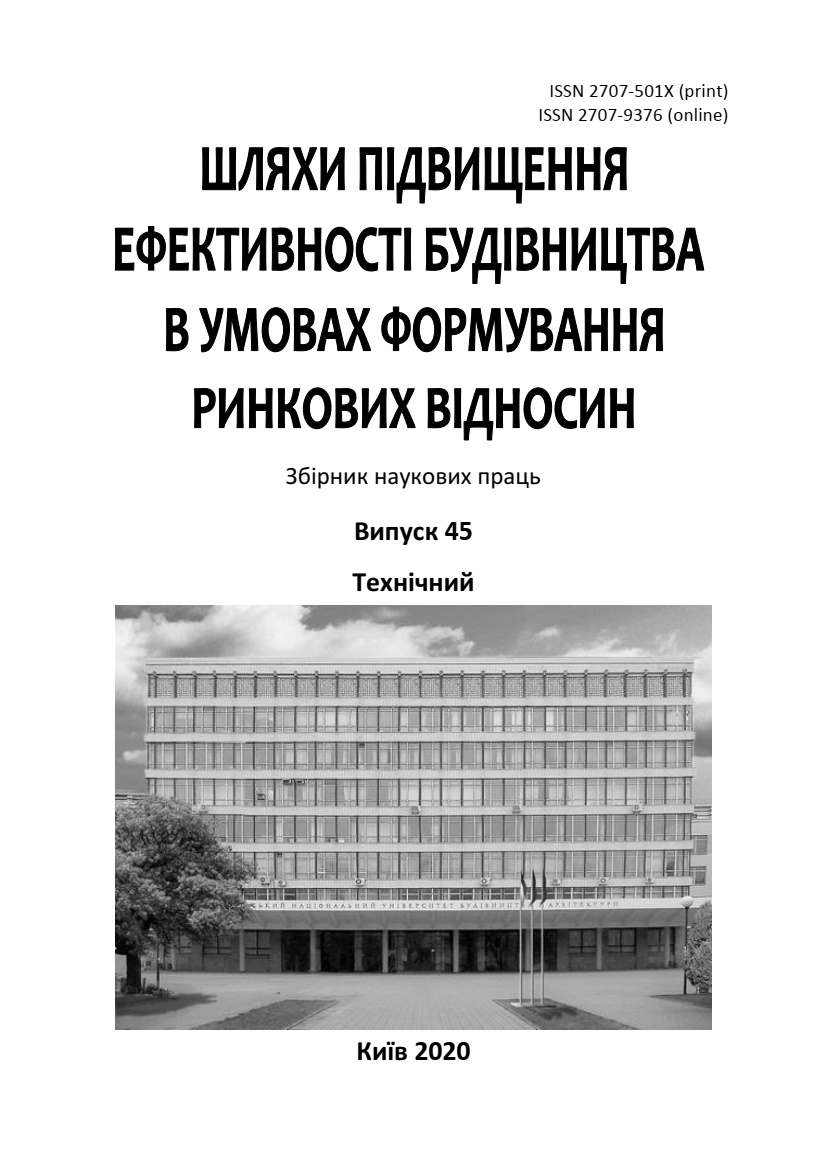Socio-economic prerequisites for reconstruction of residential buildings of the first mass series
DOI:
https://doi.org/10.32347/2707-501x.2020.45.37-45Keywords:
technology, mass reconstruction, residential, large-block houses, first mass series, socio-economic preconditions.Abstract
The article considers normative-legal, town-planning, technical and technological aspects of the problem of deployment of mass reconstruction and modernization of large-block residential buildings of the first mass series. Analysis and generalization of practical experience in the design and implementation of mass reconstruction of residential buildings of the first mass series in Ukraine and abroad shows that with the introduction of innovative approaches to the design of spatial planning and design solutions, application of modern and well-established technologies for their reconstruction economic, resource-saving, energy-saving, environmental protection and architectural and aesthetic benefits. The analysis of modern researches testifies to expediency of introduction of methods of reconstruction. An important aspect of mass reconstruction is the economic attractiveness for investors, this parameter is most widely discussed in this article. It is also important that the moral obsolescence of the building began much earlier than the physical, and the needs of people and the requirements for comfort increased significantly, which suggests the need for mass reconstruction of buildings of the first mass series. The condition for the deployment of mass reconstruction and modernization of large residential buildings of the first mass series is a comprehensive justification of its social, urban, regulatory and technological feasibility, as well as economic attractiveness for investors. This provision is taken as the task of this article. Analysis and generalization of normative-legal, social and technological aspects of reconstruction of large-block residential buildings of the first mass series and practical experience of designing and implementation of such reconstruction are accepted as the main research methods. On the example of the city of Chernivtsi the scheme of building of the city was developed and the percentage of building by buildings of the first mass series was calculated. This allows you to pay attention to the mass nature of the issue.
References
Дар’я Проказа. «Хрущовки» планують перебудувати у багатоповерхівки або модернізувати до 2040 року – Київрада. Громадське (16 грудня, 2019 року).
Осипов А.Ф. Реконструкция зданий. Проблемы и перспективы. Строительное производство. – К. : НИИСП, 2000. – Вып. 41. – С. 19–22.
Осипов О.Ф., Лєка Д.Р. Проблеми реконструкції житлових будинків перших масових серій. Шляхи підвищення ефективності будівництва в умовах формування ринкових відносин 2019. Вип. 39. С. 139-145
Закон України «Про комплексну реконструкцію кварталів (мікрорайонів) застарілого житлового фонду (ВВР), 2007 рік, №10 ст. 88, Із змінами, внесеними згідно із Законом № 2581-VIII від 02.10.2018, ВВР, 2018, № 46, ст.37 № 132-IX від 20.09.2019}
Обговорення проекту Стратегічного плану розвитку міста Чернівців на 2012—2016 роки.
Буковинська резиденція митрополитів стала всесвітньою спадщиною ЮНЕСКО // Урядовий портал
Баталина Е. Сбербанк выделит 855 млн рублей на реставрацию дома Наркомфина. Известия (22 августа 2017). Дата обращения 17 сентября 2017. Архивировано18 сентября 2017 года.
Организационно-технологические правила производства бетонных и железобетонных работ по устройству фундаментов и заглубленных сооружений при реконструкции промышленных объектов / [Беля¬ков Ю. И., Романушко Е. Г., Осипов А. Ф. и др.]. –К. : Минпромстрой УССР, 1986. – 212 с.
Осипов А. Ф. Эффективность функционирования организационно-техноло-гических систем в условиях реконструкции промышленных предприятий: збір. наук. праць. Шляхи підвищення ефективності будівництва в умовах формування ринкових відносин / А. Ф. Осипов. – К. : КДТУБА, 1998. – Вип. 3. – С. 120
Downloads
Published
How to Cite
Issue
Section
License
Copyright (c) 2021 А. F. Osipov, D. R. Lyeka

This work is licensed under a Creative Commons Attribution 4.0 International License.
Authors who publish with this journal agree to the following terms:
- Authors retain copyright and grant the journal right of first publication with the work simultaneously licensed under a Creative Commons Attribution License that allows others to share the work with an acknowledgement of the work's authorship and initial publication in this journal.
- Authors are able to enter into separate, additional contractual arrangements for the non-exclusive distribution of the journal's published version of the work (e.g., post it to an institutional repository or publish it in a book), with an acknowledgement of its initial publication in this journal.
- Authors are permitted and encouraged to post their work online (e.g., in institutional repositories or on their website) prior to and during the submission process, as it can lead to productive exchanges, as well as earlier and greater citation of published work (See The Effect of Open Access).

